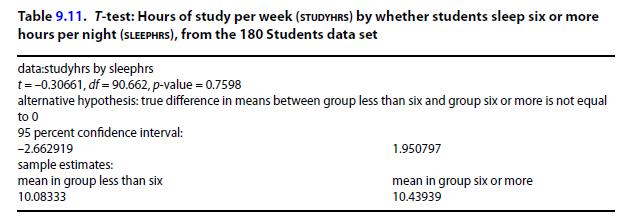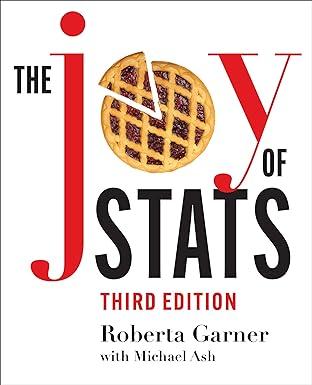The 180 Students data set is also small, and it has information about real students at a
Question:
The 180 Students data set is also small, and it has information about real students at a large university. Students were asked questions about their activities such as study and employment hours. We are going to use the 180 Students data set to practice t-tests, using one of the binary variables as the “grouping” or “factor” independent variable. Here we are testing whether the hours of study per week are significantly different for students who report six hours or more of sleep than for those who do not.
a) What did we find?

If you have access to the website data sets and software, you can explore using t-tests the following questions about gender differences:
b) Does gender predict different GPAs?
c) Employment hours?
d) Hours spent studying?
For each of these scenarios, i) Perform a t-test, ii) Assess its significance, and iii) Discuss the results.
Were you surprised or not?
If you are not using the website data sets, here are the group means and the p-values for each of these t-tests. What do you conclude in each case? Do these results surprise you? If you are currently a student, or if you can remember your student days, do your observations match the results in this data set?
Gender and GPA: Women 3.53 and Men 3.46; p = .285 Gender and Employment Hours: Women 12.66 and Men 8.71; p = .028 Gender and Study Hours: Women 11.404 and Men 8.87; p = .642
Step by Step Answer:

The Joy Of Stats A Short Guide To Introductory Statistics In The Social Sciences
ISBN: 9781487527297
3rd Edition
Authors: Roberta Garner, Michael Ash





